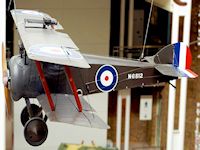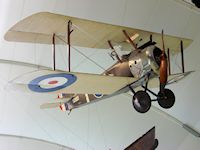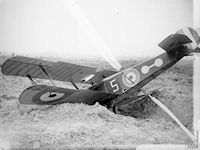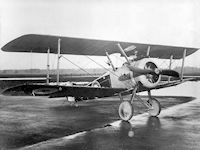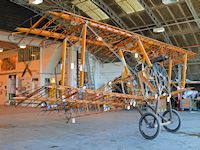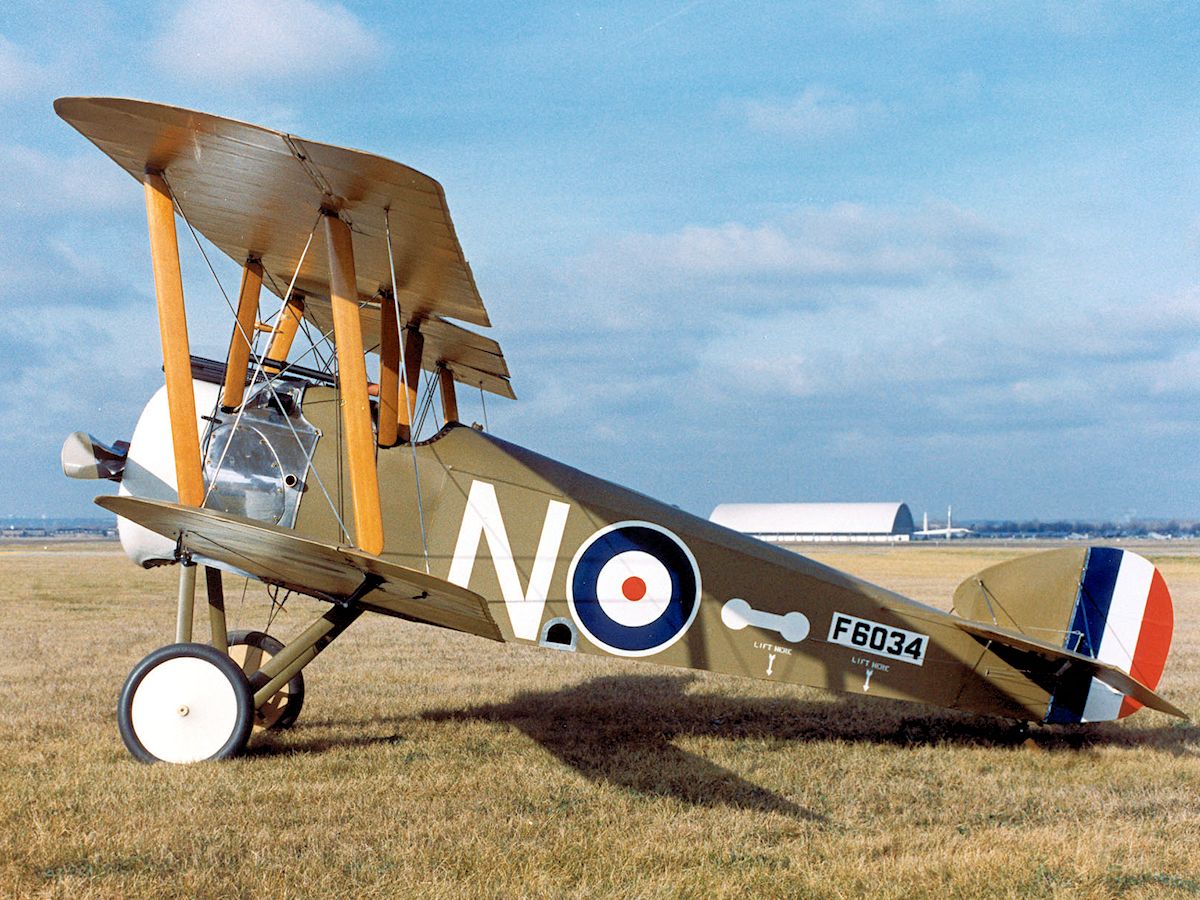
Sopwith F.1 Camel Replica, ©wikipedia
Replica of Camel F.1 flown by Lt. George Vaughn Jr., 17th Aero Squadron seen at the USAF Museum.
ROLE
Fighter.
FIRST FLIGHT
22 December 1916.
The Sopwith Camel was designed to replace the Sopwith 'Pup' Scout and became one of the best known fighter of the Great War.
The prototype was powered by a Clerget 9Z engine producing 110 hp and was known as the 'Big Pup' in its early development.
The fuselage was manufactured from a square section structure covered in doped fabric, the engine had an Aluminium cowling, plywood covered panelling around the cockpit and fabric covered wings and tail.
Twin synchronised 0.303" Vickers machine guns were fitted in front of the cockpit which fired through the propeller arc.
A metal fairing was fitted over the breeches of the machines guns which produced a 'hump' which led to the aircraft being called the Camel.
The Sopwith Camel gained a reputation as being difficult to fly which was due to the placement of the engine, guns and fuel tank resulting in 90% of the weight being within the front seven feet of the aircraft.
The Clerget 9Z engine was very sensitive to fuel mixture with incorrect control often leading the engine to choke and cut out with many crashes occurring during take-off.
The Camel was tail heavy so the pilot had to apply constant forward pressure to the stick to maintain level flight at low altitude. The aircraft could be set-up to fly level at higher altitude so the pilot could fly 'hands off', however, should the Camel stall it would immediately go into a spin.
PRODUCTION
The Sopwith Camel was produced from 1917, with 5,490 built.
ENGINE
Clerget 9B engine, producing 130 hp.
ARMAMENT
2 x Vickers 0.303” machine guns
4 x 25 lb Bombs
The Sopwith Camel entered service in the Western front with No. 4 Squadron RNAF in June 1917 and by the end of July it was operational with No. 3 and No. 9 Squadron RNAF and No. 70 Squadron RFC. By February 1918 13 squadrons were operating the Sopwith Camel.
Together with the S.E.5a and the SPAD S.XIII, the Camel helped to re-establish the Allied aerial superiority that lasted well into 1918.o
During July 1917, No. 44 Squadron RFC re-equipped with the Camel to conduct the home defence mission. By March 1918, the home defence squadrons had been widely equipped with the Camel and by August 1918, a total of seven home defence squadrons were operating these aircraft.
By mid-1918, the Sopwith Camel was being out performed as a fighter by the German aircraft such as the Fokker D.VII so its role was switched to Ground Attack and infantry support. However, as the German offensive waned the Camel was able to operate as a fighter again maintaining air superiority till the end of the war.
| Crew - 1 |
| Wing Type - Bi-plane |
| Length - 18ft 9in (5.71m) |
| Wingspan - 26ft 11in (8.53m) |
| Height - 8ft 6in (2.59m) |
| Empty Weight - 930lb (420kg) |
| Max. Weight - 1,455lb (660kg) |
| Max. Speed - 115mph (185 km/h) |
| Range - 300 miles (485 km) |


